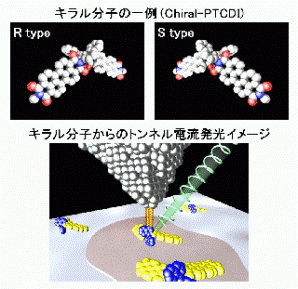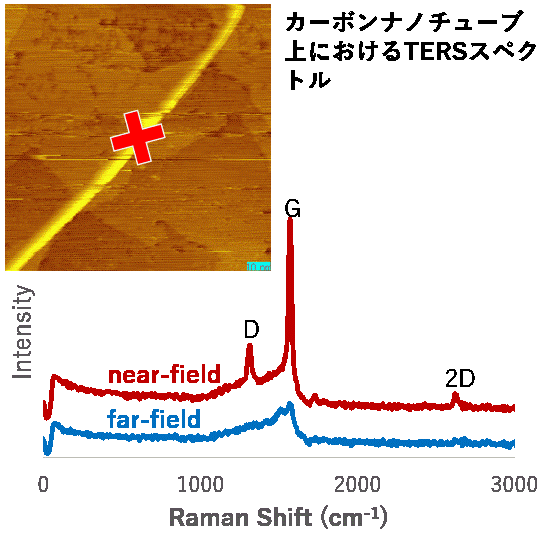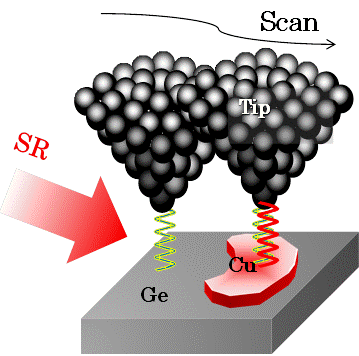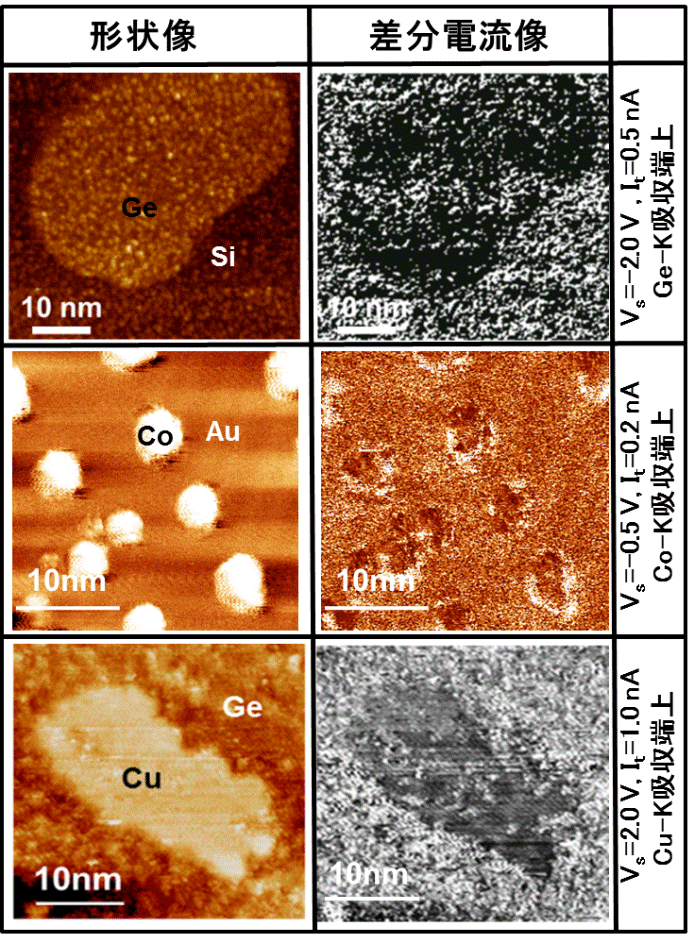In the field of biomolecular science, “chirality” is one of the most important properties. All of the biological molecules are alternative enantiomers which show optical activity. An evolutionary origin of such a homo-chirality of biomolecules is still one of the mysteries of nature. So far, the optical activities have been evaluated by the methods in macroscopic scale such as circular dichroism and optical rotation dispersion. For clarifying causality between the optical activities and atomic/electronic configurations, it is quite attractive to investigate the optical properties of chiral molecules at nanoscale. In this group, we began with a construction of combined analysis system for evaluating various properties of a chiral molecular nano-systems, and then proceed mainly to observe the right and left circularly polarized light emission distinctively from them using scanning tunneling microscopy light emission spectroscopy, tip-enhanced Raman scattering spectroscopy, and so on.
RESEARCH
Photon-STM Group
Synchrotron Radiation STM Group
Accelerated electrons or positrons with several GeV generate X-rays to tangential direction, called "synchrotron radiation (SR)" having a wide range of wavelengths, high intensity and low emittance. Using SR as a probe, we can evaluate physical properties and functions of various materials at the atomic scale. Our group have used SPring-8, a large SR facility, and developed the experimental method that can observe the density of states caused by inner nuclear excitation in real space and atomic resolution. We succeeded in the nanoscale elements identification in Ge/Si(111), Co/Au(111), Cu/Ge(111), and clarify principles of elemental contrasts and directly observe the atomic motion due to X-ray irradiation. Furthermore, we develop and evaluate a general-purpose X-ray source that has minute-spot and high-intensity, and perform various measurements in a laboratory system.
Structural Color Group
Recently, biomimetics, the research field that mimics and reproduces superior functions of organisms, has attracted public attention. In particular, structural colors produced by the interaction between fine nanostructures and visible light exhibit vivid hue (e.g. beetles, peacocks, and Morpho butterflies), which is distinct from pigment coloration. Morpho butterflies in South America (Fig. (a)) are well known for their wings’ brilliant blue color, and its coloration is independent of viewing angles in spite of the interference color. This contradicting feature originates from the skillful combination of nanoscale "order" and "disorder." We have demonstrated the principles by artificially reproducing the nanostructure with "order" and "disorder" (Fig. (b)). The fabricated Morpho reflector shows a bright blue color in a wide angular range and no color fading. Besides, this colored material is eco-friendly owing to the unnecessity of pigment, which can be applied to the visual industry such as ornament, cosmetics, and displays. Nowadays, in addition to optical simulations on the "disorder" and the development of large-area, fast-fabrication technologies (Fig. (c)), we are working on new applications and mimicry of other organisms.




.png)